Culture and Arts
THE ARCHAEOLOGICAL MUSEUM
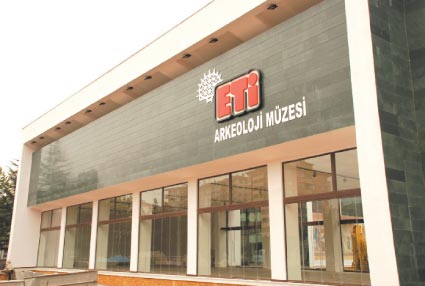

Eskişehir Archaeological Museum was established between the years 1944-1945 as a museum depot in the Alaaddin Mosque. In this depot, various architectural pieces/items and statues excavated in antique cities in the vicinity or unearthed coincidentally were brought together. Later, the artifacts in the museum were stored in the medrese rooms of the Kurşunlu Külliyesi, which is situated in the Odunpazarı district and the larger items were exhibited in the courtyard. As a result of the excavations in the nearby area, when the premises proved to be insufficient, the Directorate of Antique Objects and Museums commissioned the construction of a new museum in Irmak Street of Akarbaşı. Eskişehir museum depot was opened to visit in 1914 in the new building after exhibition and organization processes were completed.
The collection of artefacts in the Eskişehir Archaeological Museum is exhibited under the sections of History of Science, Prehistoric Artefacts, Pieces from the Classic Period, and Coins and Stone Pieces. In the History of Science section
of the museum, animal and plant fossils which were gathered from Eskişehir and its vicinity are exhibited. Among the most important items are the tusks and some bones of a prehistoric elephant.
In the section of Prehistoric Artefacts, there are some works of art found in the vicinity of Eskişehir, dating back to the Prehistoric times. Pottery, metal objects and stone figures dating from the Chalcolithic Age (5500 BC) to the Hittite Period (2000 BC) are exhibited in this section. In addition, tomb findings dating back to the Bronze Age, metal pottery, needles, axes, knives, daggers and ornamental objects are among the other objects in this section. Further, various artefacts belonging to prehistoric ages found in Demircihöyük and Küçükhöyük burial site, Kocakızlar Tumulus, Ballıhisar village (Pessinus) and Badabat, Han underground settlement excavations are displayed in this section. The scripture of honor, unearthed during the excavations in Karahoyuk (Midaion), is among the significant pieces in the section.
.jpg)
In another section, clay pottery, plates, figurines, metal axes, needles and necklaces belonging to the Hittite (2000 BC) and the Phrygian Periods (1200-200 BC) are on display. In this section, ceramics, perfume bottles, oil lamps and glass work from the Hellenistic Period (330-30 BC) are also exhibited. Furthermore, earthen artefacts, pottery, figurines and metal works, crosses, silver appliqués, golden saint necklaces and oil lamps are found in this section.
In the Coins Section of the Museum, there is a collection comprised of a variety of gold and silver coins dating back to the Hellenistic, Roman, Byzantine and Islamic periods. In the Stone Works section of the museum, statues of mythological gods and goddesses, particularly Cybele and Men, the statue of Asklepios, statues from the Roman and Byzantine ages, statuettes, alters, busts and ground floor mosaics unearthed in Dorylaion (Şarhöyük) and floor mosaics from the Late Roman Period are displayed. The museum was moved to a new building thanks to the support of Eti Company.
THE MUSEUM OF THE REPUBLICAN HISTORY
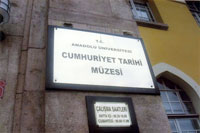
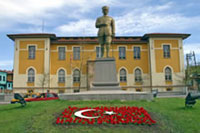
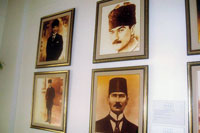
The building of Anadolu University Museum of the Republican History is located at the point where İki Eylül Street, one of the main arterial roads of Eskişehir, reaches Odunpazarı District, known for its traditional local architecture. The building has a striking appearance, which reflects the design of the First National Architecture Period with its frontals. It is the first example in Eskişehir of the structures built nationwide, the Numune Mektepleri, during the late Ottoman educational System. The building was constructed in 1915-1916 under the name Turan Numune Mektebi.
On the ground floor of the three-storey building, which was opened to visitors by Anadolu University in 1994, there are 131 photos which document the birth of the Turkish Republic, Battle of Gallipoli, Battle of Sakarya, Battle of Dumlupınar and the first years of the Republic. In addition, 51 portraits
of Atatürk, a collage depicting the summary of the War of Independence and the reforms, two pastel and color pencil paintings of the War of Independence, 7 model warships used by the Turkish Navy during the World War I, the War of Independence and during the period of the Republic and an oxcart are on display.
The first floor of the museum houses 126 items and works of art which belonged to Atatürk, some local newspapers published between 1925 and 1980, and a library. In the basement of the museum, there is a 40-seat small hall where 48 documentaries about Atatürk can be seen.
AVIATION MUSEUM
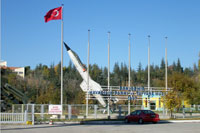
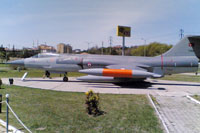
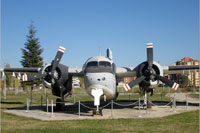
The air museum, located across the Yunusemre Campus of Anadolu University, was opened in 1998 as an open-air exhibition area. In the museum, a variety of commercial and war planes are on display. In addition, pilot outfit, badges, model aircrafts and engines are found in exhibition rooms.
CONTEMPORARY GLASS ARTS MUSEUM
The museum was established in 2007 with the collaboration of the Municipality of Eskişehir, Anadolu University and Glass Enthusiasts’ Society. The works of 58 domestic and 10 foreign artists are on display in Turkey’s first glassworks museum. You must certainly see this collection if you wonder what emerges when glass combines with arts.

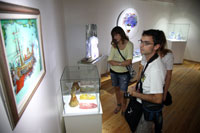

OPERA

In the Metropolitan Municipality Opera House, the residents of Eskişehir are meeting regularly with the most distinguishing
performances of opera and ballet, which are organized in cooperation with the Symphony Orchestra of the Metropolitan Municipality of Eskişehir and the State Opera and Ballet.
THEATRE
The Metropolitan Municipality Theatres continuously plays to a full house. The theatre not only puts plays on the stage but also strives to to introduce the art of theater to a larger audience through such components as creative drama, play reading and radio theatre, traditional Turkish theatre, and children’s and youth theatre. The City Theatres, which meet the audience at five different stages, represent Eskişehir in both national and international art festivals successfully. You can visit www.eskisehirtiyatrolari.com for up-to-date programs.






